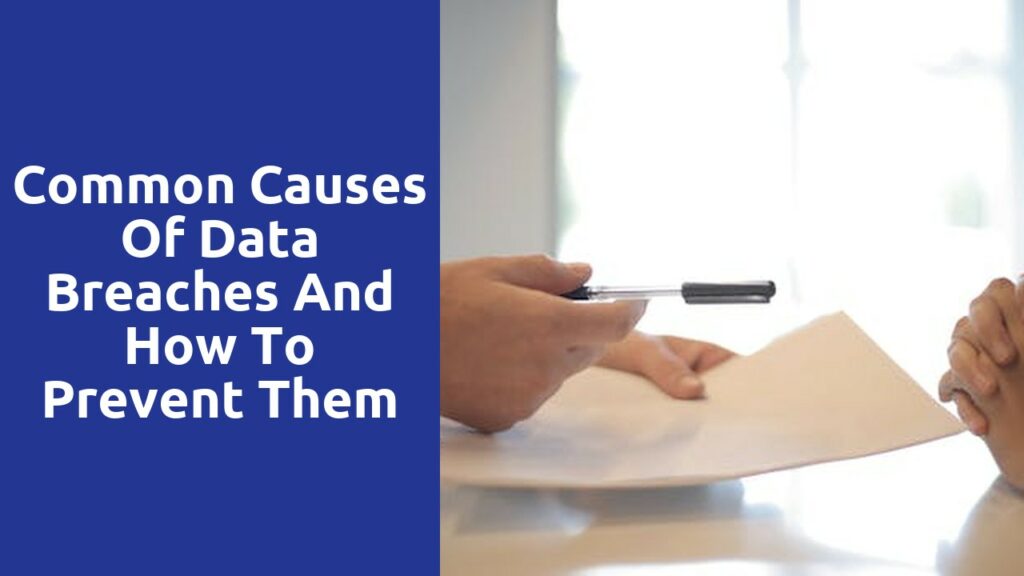Negligent Employees: The Human Factor in Data Breaches
Employees are often the weakest link when it comes to data breaches within an organization. Despite the numerous technological advancements in cybersecurity, human error continues to be a significant contributor to these incidents. Negligence, lack of awareness, and insufficient training are common reasons why employees inadvertently expose sensitive information or fall victim to phishing attacks.
One of the primary causes of data breaches through employee negligence is clicking on suspicious links or opening malicious attachments. This often occurs due to a lack of awareness about the risks associated with phishing emails. Attackers have become increasingly sophisticated in crafting convincing emails that entice employees to click on a link or download an attachment. Without proper training on how to identify these malicious messages and the potential consequences, employees unknowingly put the organization’s data at risk. Additionally, the use of weak or easily guessable passwords, sharing login credentials, or leaving sensitive information unattended are some examples of employee negligence that can lead to data breaches.
Weak Passwords: Strengthening the First Line of Defense
With the increasing number of cyber attacks and data breaches, it has become vitally important to strengthen our first line of defense: passwords. Weak passwords are like an open invitation to hackers, making it easy for them to gain unauthorized access to our personal and sensitive information. It is alarming to see how many people still rely on simple and easily guessable passwords, such as “123456” or “password.” These weak passwords are not only putting individuals at risk, but they also pose a significant threat to organizations and their valuable data.
To strengthen the first line of defense against cyber attacks, it is crucial to create strong and unique passwords for all our online accounts. The first step is to avoid using generic or commonly used passwords. Instead, we should opt for a combination of uppercase and lowercase letters, numbers, and special characters. Additionally, the length of the password plays a vital role in its strength. The longer the password, the harder it is for hackers to crack. It is also recommended to use different passwords for each account to mitigate the impact of a potential password breach. Implementing these simple yet crucial measures can go a long way in safeguarding our personal and confidential information from falling into the wrong hands
Phishing Attacks: Recognizing and Avoiding Email Scams
Phishing attacks continue to be prevalent in our online world, with email scams being one of the most common methods used by cybercriminals. These scams are designed to trick individuals into providing sensitive information such as passwords, credit card details, and bank account numbers. Unfortunately, the perpetrators behind these attacks are becoming increasingly sophisticated, making it essential for all internet users to be vigilant and educated on how to recognize and avoid falling victim to these scams.
One of the key indicators of a phishing email is the presence of spelling and grammatical errors. Legitimate organizations and businesses often have dedicated professionals proofreading their communications before sending them out, so if you notice any mistakes in the email, it should raise a red flag. Additionally, be cautious of emails that use generic greetings like “Dear Customer” instead of addressing you by name. Legitimate companies usually personalize their messages, addressing you with your full name or username, which helps to establish trust.
Malware: Guarding against Viruses, Trojans, and Ransomware
Malware poses a significant threat in today’s digital landscape. With the increasing dependence on technology, it has become crucial to implement robust measures to guard against viruses, trojans, and ransomware. These malicious programs can infiltrate our devices, compromising our personal and sensitive information, causing financial loss, and bringing our digital lives to a halt.
One of the first steps in protecting against malware is to install and update reliable antivirus software. These programs are designed to detect and eliminate viruses, trojans, and other malicious software from infecting our devices. Regularly updating the antivirus software ensures that it has the latest virus definitions, enabling it to stay ahead of new and emerging threats.
Moreover, practicing safe internet browsing habits can also minimize the risk of malware infection. This includes being wary of suspicious websites, not clicking on unknown links or pop-up ads, and refraining from downloading files from untrusted sources. Additionally, exercising caution when opening email attachments, as attachments can often contain hidden malware, is crucial in guarding against these threats.
By combining a proactive approach towards installing and updating antivirus software and adopting safe browsing practices, individuals and businesses can enhance their defenses against malware. However, given the ever-evolving nature of malware, it is essential to stay vigilant and continuously educate ourselves on the latest security practices to protect our digital assets from these constant threats.
Unpatched Software: The Importance of Regular Updates
In today’s digital world, software vulnerabilities are an ever-present threat. Unpatched software poses a significant risk to both individuals and organizations alike. Without regular updates, these vulnerabilities remain exposed, leaving systems open to potential exploits by malicious actors.
The importance of regular updates cannot be emphasized enough. Software updates often contain critical patches that address security flaws and vulnerabilities. By neglecting to update software, users increase the chances of falling victim to cyber-attacks such as malware infections, data breaches, and ransomware attacks. Hackers are constantly evolving their techniques, and they actively target systems that have not applied the latest security updates. It’s like leaving a door wide open to potential intruders. To stay protected, regular updates are a crucial aspect of maintaining digital security.
Insider Threats: Protecting Your Data from Within
Insider threats pose a significant risk to organizations as they involve individuals who have authorized access to sensitive data. These insiders can be employees, contractors, or business partners who misuse or intentionally exploit their access privileges. While organizations invest heavily in external cybersecurity measures, it is equally essential to address the threat from within.
One of the key approaches to protecting data from insider threats is implementing robust access controls. Limiting access privileges to only what is required for individuals to perform their job functions can help minimize the risk of unauthorized data access or tampering. Additionally, implementing a principle of least privilege ensures that employees only have access to the information they absolutely need, reducing the potential damage that can be caused by a disgruntled or compromised insider. Furthermore, regular monitoring and auditing of access logs can help detect any unusual or suspicious activities, allowing organizations to take necessary actions promptly.
Related Links
Common Causes of Data Breaches and How to Prevent Them
Understanding the Impact of Data Breaches on Businesses

